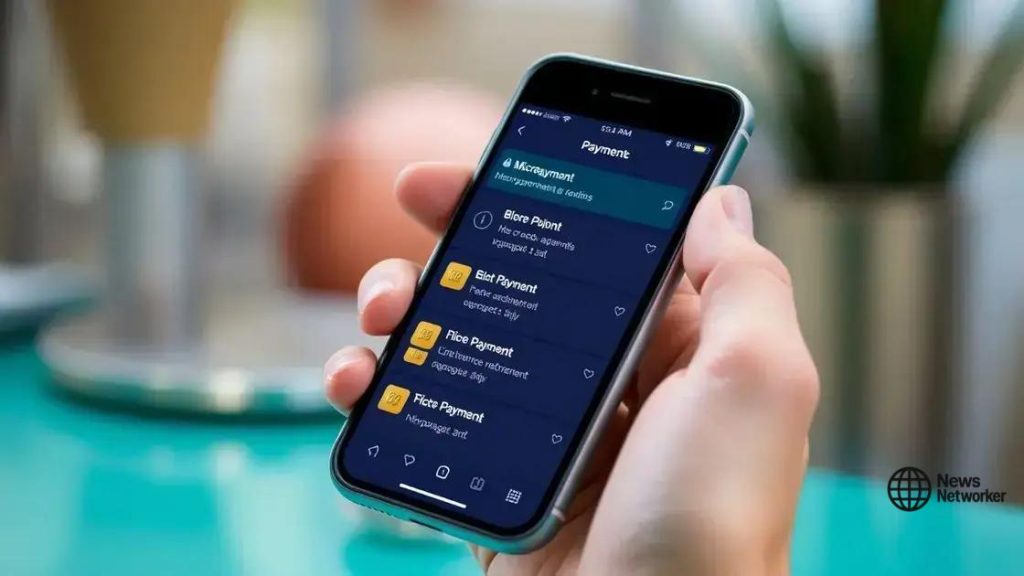Micropayment transaction limits: what you need to know

Micropayment transaction limits enhance user security and control by restricting the maximum amount processed in small transactions, benefiting both consumers and businesses in the digital economy.
Micropayment transaction limits play a crucial role in our digital economy, affecting how we make small purchases online. Have you ever wondered how these limits impact your buying habits?
Understanding micropayment transactions
Understanding micropayment transactions is essential in today’s digital world. These small-value transactions, typically under a few dollars, enable consumers to make quick purchases online without spending large amounts at once.
What Are Micropayment Transactions?
Micropayment transactions refer to financial exchanges that involve minimal amounts of money. Common examples include in-app purchases, digital content access, and pay-per-view services. These transactions often rely on innovative technology to process payments efficiently and securely.
Benefits of Micropayment Transactions
- Allows consumers to pay for individual items rather than subscriptions.
- Encourages content creators and businesses to monetize their work.
- Increases accessibility to digital products and services.
Moreover, micropayments simplify buying experiences. Rather than committing to a larger purchase, users can enjoy flexibility by paying only for what they need. This model is especially prevalent in gaming and streaming platforms, where users can buy features, upgrades, or extra content.
As microtransactions grow in popularity, it’s vital to note their influence on online markets. They reshape how businesses engage with customers, fostering a new avenue for generating revenue. In some scenarios, micropayments even contribute to customer retention, as users are more willing to make small purchases frequently.
Understanding transaction limits is another critical aspect of micropayments. These limits can vary based on platforms and services. Knowing them helps consumers manage their spending and avoid unexpected charges.
The role of transaction limits
The role of transaction limits in micropayments is essential for ensuring a balanced and secure online economy. These limits help protect users from unexpected charges while allowing businesses to thrive.
What Are Transaction Limits?
Transaction limits define the maximum amount a user can spend in a single purchase or within a certain timeframe. These limits can vary significantly between different platforms and services.
Importance of Setting Limits
- Enhances user security by reducing fraud risk.
- Prevents accidental overspending on small purchases.
- Encourages responsible consumer behavior.
Moreover, transaction limits facilitate smoother payment processing. They help payment providers manage risks effectively and maintain trust within the system. By implementing these limits, businesses can safeguard their financial operations and reduce chargebacks.
In many cases, platforms will adapt their transaction limits based on user behavior and feedback. This responsive approach ensures that consumers feel comfortable making micropayments without concern. Limiting transactions can also help in maintaining a steady cash flow for businesses, allowing them to plan better for revenue.
Understanding how transaction limits function can empower users. With this knowledge, consumers can make informed decisions about their spending and choose platforms that align with their preferences.
Benefits of micropayment transaction limits

The benefits of micropayment transaction limits are significant for both consumers and businesses. These limits provide safety and convenience in digital transactions, making online shopping experiences more enjoyable.
Consumer Protection
One of the primary advantages of setting transaction limits is that it protects consumers from excessive spending. When limits are in place, users feel more secure knowing they won’t accidentally overspend on impulsive purchases.
Improved Budget Management
- Transaction limits allow users to manage their budgets effectively.
- Consumers can make small purchases without affecting their overall finances.
- This approach encourages responsible spending habits.
Moreover, businesses also gain from implementing micropayment transaction limits. For instance, they can reduce the risk of fraud, as smaller transactions are less likely to attract malicious activities. This leads to improved customer trust, as users know their data is secure.
Transaction limits can also enhance customer satisfaction. Users appreciate having clear spending boundaries, which can lead to repeat purchases and increased loyalty. With every small purchase, they become more invested in the platform and its offerings.
By promoting a positive shopping experience, micropayment transaction limits can ultimately boost sales for businesses. When users feel in control, they are likelier to engage in frequent, low-cost transactions, benefiting everyone involved.
Challenges associated with micropayment limits
Challenges associated with micropayment limits can impact both consumers and businesses. While these limits have benefits, they also present hurdles that must be addressed effectively.
Consumer Frustration
One primary challenge is consumer frustration with transaction limits. Users who want to make larger purchases may find these restrictions inconvenient. It can hinder their shopping experience, especially if they need to manage multiple transactions to complete a single purchase.
Varying Limit Standards
- Different platforms may have different transaction limits.
- This inconsistency can confuse users about spending guidelines.
- Some users may unintentionally exceed limits, leading to declined transactions.
Additionally, businesses face issues related to micropayment limits. Setting appropriate limits is crucial for maximizing customer engagement. Too low of a limit might deter users from making purchases entirely. On the other hand, overly generous limits could increase the risk of fraud and chargebacks.
Another challenge is the technological aspect. Implementing and managing micropayment systems requires robust infrastructure. Businesses must invest in advanced payment processing technologies to ensure security and efficiency. This can be a barrier, especially for small businesses with limited resources.
Moreover, the regulatory environment can create uncertainties around micropayments. Different regions may impose various rules that affect how transaction limits are set and enforced. Navigating these regulations can be complicated for businesses trying to operate globally.
Future trends in micropayment systems
Future trends in micropayment systems are shaping how consumers and businesses interact in the digital economy. As technology evolves, these systems are becoming more efficient, user-friendly, and secure.
Increased Adoption of Mobile Payments
One key trend is the growth of mobile payment solutions. With the rise of smartphones, users are increasingly looking for ways to make small purchases quickly and easily from their devices. Mobile wallets allow for seamless micropayment transactions, enhancing user experience.
Blockchain and Cryptocurrency Integration
- Blockchain technology offers improved security and transparency.
- Cryptocurrencies provide an alternative payment method for micropayments.
- This integration can lower transaction costs significantly.
Additionally, the integration of blockchain technology is on the rise. It adds layers of security and transparency, benefiting both users and businesses. With lower transaction fees, cryptocurrencies can be an attractive option for micropayments, making them more viable for everyday purchases.
AI and machine learning are also expected to play a bigger role in micropayment systems. These technologies can help identify spending patterns, improving transaction processing speeds and security measures. By predicting user behavior, businesses can also offer personalized payment solutions.
Moreover, regulatory changes may influence how micropayment systems operate. As governments and financial institutions move towards encouraging digital payments, businesses will need to adapt and comply with new regulations to stay competitive.
FAQ – Frequently Asked Questions about Micropayment Systems
What are micropayment systems?
Micropayment systems allow users to make small transactions, typically for digital goods or services, improving convenience and flexibility.
How do transaction limits affect users?
Transaction limits help protect users by preventing overspending and enhancing security during online payments.
What technologies are shaping the future of micropayments?
Technologies like mobile wallets, blockchain, and AI are enhancing micropayment systems, making them faster and more secure.
What benefits do micropayment systems offer businesses?
Micropayment systems can boost customer engagement, reduce transaction costs, and create new revenue streams for businesses.





